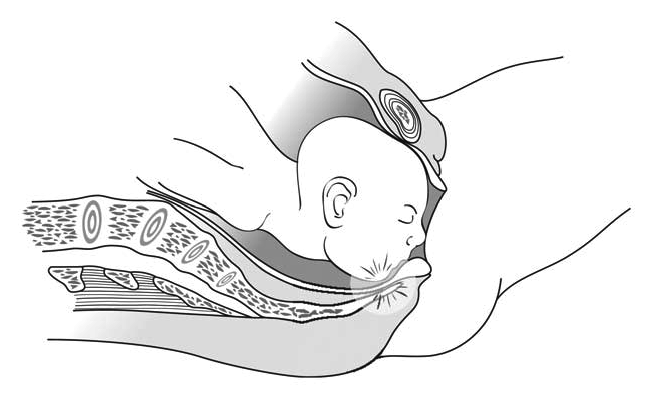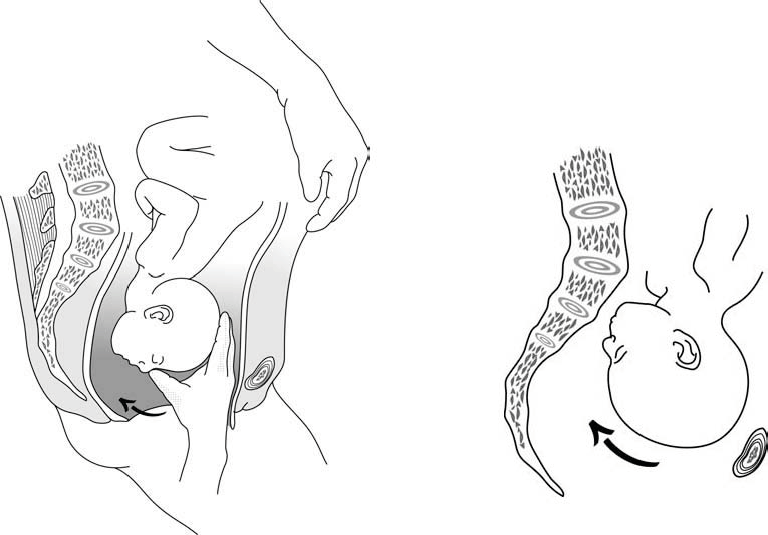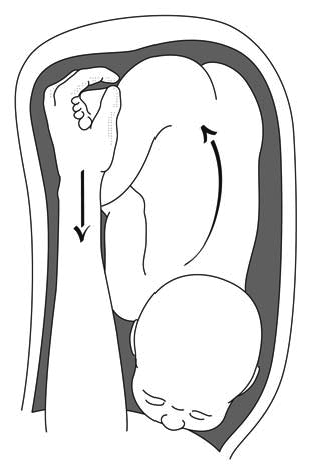7.9.1 Diagnosis
- Palpation of the mother's abdomen at the start of labour: palpate the occipital region; a cleft between the head and the back will be palpable, due to hyperextension of the head.
- On vaginal examination: no suture or fontanelle can be felt; orbits, nose, mouth, ears and chin palpable. Palpation of the chin is essential to confirm the diagnosis.
7.9.2 Management
Determine the orientation of the chin—anterior (at the mother's pubis) or posterior.
The chin is anterior
Vaginal delivery is possible. Labour may be slow, patience is required.
If uterine contractions are inadequate, oxytocin may be used.
Episiotomy is usually needed during delivery (Figures 7.4), given the maximum amount the perineum can stretch.
If instrumental delivery is necessary, use forceps. Vacuum extraction is contra-indicated for a live fœtus.
Figures 7.4 - Chin anterior: delivery possible

The chin is posterior
Vaginal delivery is not possible (Figure 7.5). A caesarean section must be arranged. Refer if necessary.
Figure 7.5 - Chin posterior: impaction

If caesarean section is not feasible and referral is not possible, attempt the following manoeuvres:
- Flex the head to obtain a vertex presentation: with one hand in the vagina, grasp the top of the skull and flex the neck, using the other hand, on the abdomen, to apply pressure to the foetal chest and buttocks. Obviously, the presenting part must not be engaged, and it is often hard—or impossible—to keep the head flexed (Figures 7.6).
Figures 7.6 - Manoeuvre to convert face to vertex presentation

- Rotate the head to bring the chin anteriorly: push the face and chin back to free the shoulders from the pelvic inlet then, turn the head within the pelvic cavity, using a hand on the abdomen to help the rotation by applying pressure to the shoulders. In this way, the chin is brought to the front (Figures 7.7).
Figures 7.7 - Rotation manoeuvre to bring the chin anteriorly
- Version: internal podalic version, then total breech extraction (Figure 7.8).
Figure 7.8 - Internal podalic version

All these manoeuvres are difficult and pose a significant risk of uterine rupture. They must be done when the uterus is not contracting. Whenever possible, caesarean section should be performed instead.
